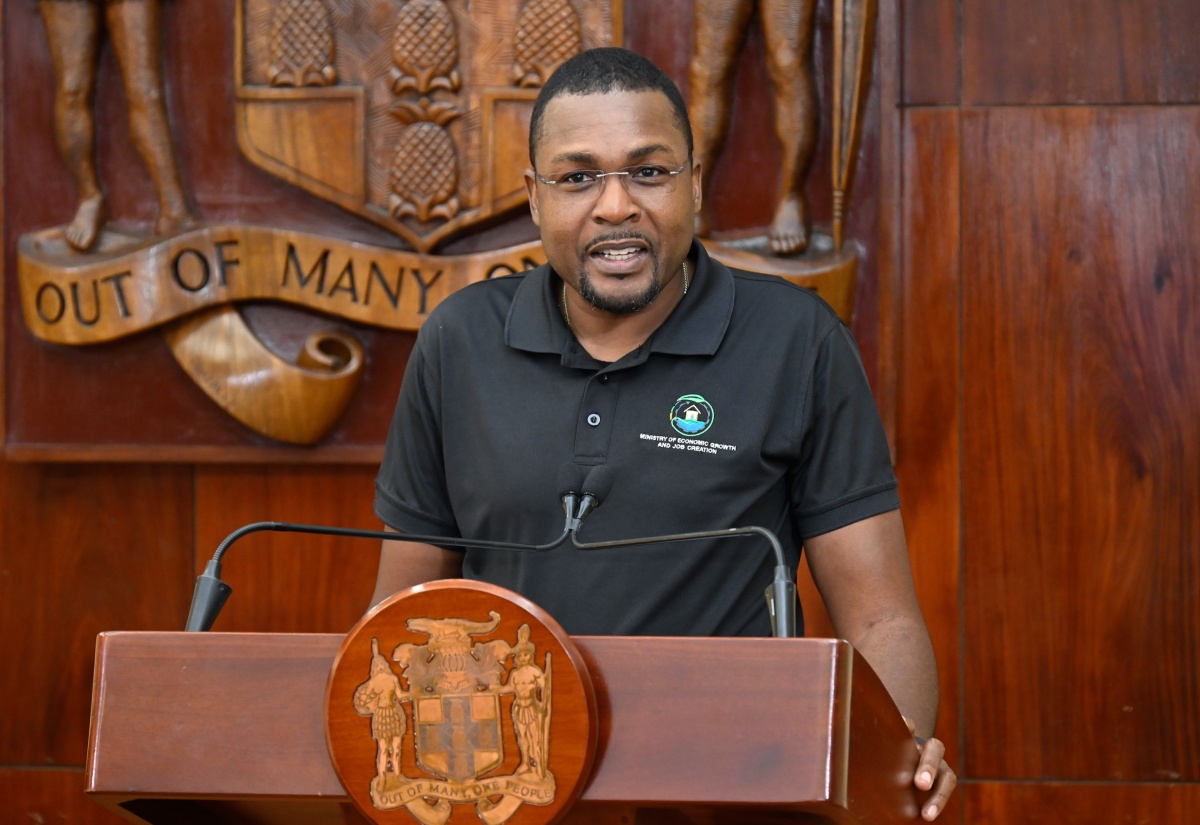Gov’t Earmarks $5B for Post-Hurricane Emergency Infrastructure Recovery
By: , November 14, 2025The Full Story
Cabinet has approved $5 billion to undertake emergency repairs to roads and gullies, reopen roads, and carry out drain-cleaning activities following the passage of Category Five Hurricane Melissa
This was disclosed by Minister without Portfolio in the Ministry of Economic Growth and Infrastructure Development with Responsibility for Works, Hon. Robert Morgan, during a press briefing at Jamaica House on Thursday (November 13).
“Cabinet has decided that, preliminarily, we will be spending $5 billion through the National Works Agency (NWA) to reopen roads, including some drain cleaning. One billion dollars [is earmarked] for road repairs, and this is just emergency road repairs. Also, $2 billion [is programmed] for repairs to gullies, particularly the Sandy Gully [in Kingston], the North and South Gullies [in Montego Bay] and their tributaries, as well as some minor culverts, gullies and fords across the island,” he said.
Minister Morgan noted that preliminary assessments indicate road infrastructure damage is estimated at $35 billion.
“We have not yet completed our assessments… so we expect that that figure will increase over time,” he added.
Mr. Morgan informed that prior to the hurricane’s passage, the NWA expended approximately $400 million to intensify preparatory activities.
He stated that following the system’s passage, 85 per cent of blocked roads were cleared within five days.
“Immediately after the hurricane, we did our quick impact survey and found that 370 roads were essentially impacted… but we were able to clear most of them, about 85 per cent of them, within five days. We prioritised routes that dealt with hospitals and airports and would provide needy supplies to areas that were impacted,” he said, noting that some roads initially cleared were subsequently re-impacted by heavy rains.
The Minister advised that of the 396 roads affected, 30 remain blocked, 123 have two-lane access, and 248 are accessible via single lane.
He added that a comprehensive list of affected roads will be published, noting that only two roads in Westmoreland remain blocked, “although we have a lot of blocked roads in places like St. Elizabeth”.
Mr. Morgan noted that the imposition of a curfew in St. Elizabeth has enabled enhanced road-clearing efforts in the Holland Bamboo corridor, with the strategic use of heavy equipment now under way.
Additionally, he stated that key preliminary assessments indicate major highways and critical bridges remain intact.
Mr. Morgan also noted that pre-storm drain and gully cleaning helped reduce flooding in several urban areas, and that critical corridors were rapidly reopened through coordinated efforts involving local contractors, NWA teams, the Office of Disaster Preparedness and Emergency Management (ODPEM), and the Jamaica Defence Force (JDF).
“There are some weaknesses that we have identified… secondary and rural roads have been severely eroded or washed out. We need to start looking at, as a part of our building for resilience, adequate slope protection because a lot of the landslides were caused because we did not have adequate slope protection in hilly interiors.
“We have to look at our drainage systems, as these events, even though you cannot plan for a Category Five hurricane, over time we have realised that our drains are not able to accommodate the run-off that comes off from certain types of weather events that are becoming more frequent. We also have a challenge where power and communication infrastructure along roadways were impacted,” the Minister said.
Regarding future strategies, Mr. Morgan advised that road and bridge infrastructure must be upgraded using climate-resilient standards. He further emphasised the need to expand drainage networks, implement slope stabilisation projects, and strengthen public-private partnerships to ensure rapid response capabilities.
He added that more rapid, real-time monitoring and geographic information system (GIS)-based risk mapping of vulnerable areas will be required, alongside the integration of resilience planning across all infrastructure projects.
Hurricane Melissa made landfall in New Hope, Westmoreland, on October 28, causing widespread damage across sections of Westmoreland, St. Elizabeth, St. James, Hanover, Trelawny, and St. Ann.


